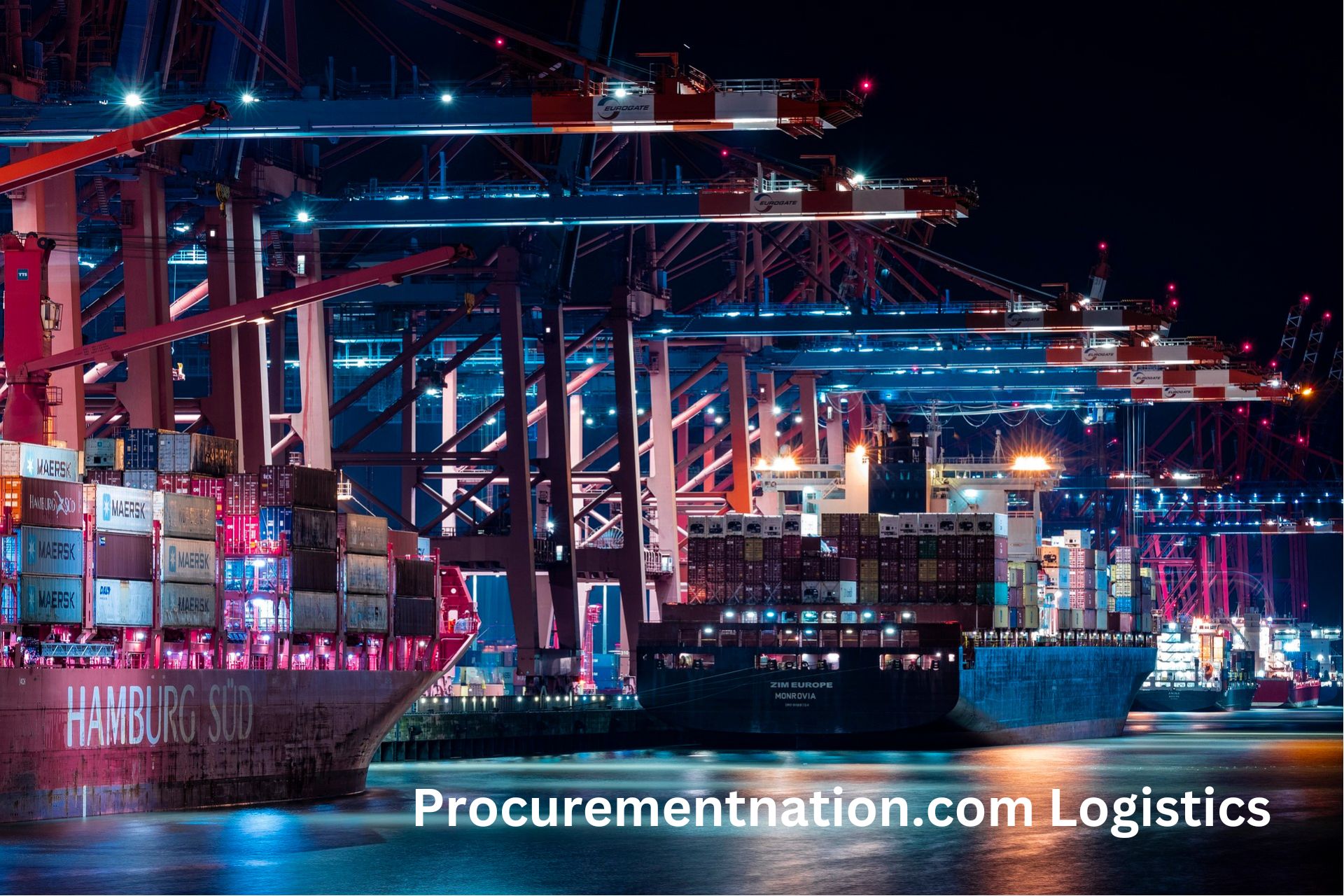Supply Chain Management (SCM) encompasses a wide range of activities that facilitate the flow of goods and services from suppliers to customers. It integrates various components such as procurement, production, inventory management, logistics, and distribution, creating a seamless network that ultimately aims to satisfy customer needs while minimizing costs.
Contents
- 1 The Role of Logistics in Supply Chain Management
- 2 Common Challenges in Logistics Management
- 3 Strategies for Streamlining Logistics with Procurementnation.com
- 4 Leveraging Technology for Better Logistics
- 5 Importance of Demand Forecasting in Logistics
- 6 Best Practices for Effective Logistics Management
- 7 Case Studies: Success Stories with Procurementnation.com
- 8 Conclusion: The Future of Logistics in Supply Chain Management
Components of Supply Chain Management
- Planning: This phase involves forecasting demand, managing resources, and developing strategies to meet customer requirements.
- Sourcing: Selecting suppliers to procure raw materials and components is critical. The relationship established here can significantly impact cost and quality.
- Production: This involves the transformation of raw materials into finished products. Efficiency in this stage can lead to reduced lead times and increased customer satisfaction.
- Logistics: This focuses on the physical movement and storage of goods. Effective logistics ensure timely delivery and optimal inventory levels.
- Inventory Management: Maintaining the right balance of stock is crucial. Too much inventory can lead to excess costs, while too little can result in missed sales opportunities.
Understanding these components helps businesses manage their supply chain more effectively and respond to market demands.
The Role of Logistics in Supply Chain Management
Logistics serves as the backbone of SCM, acting as the connecting thread between various stages. It encompasses planning, executing, and controlling the flow of goods, services, and information from point of origin to point of consumption.
Key Functions of Logistics
- Transportation Management: Selecting the most cost-effective and timely means of transportation. This includes determining the best routes and methods (land, air, sea) for delivering goods.
- Warehousing: Involves managing storage facilities where goods are held before distribution. Proper warehouse management minimizes costs and ensures goods are readily available.
- Order Fulfillment: Encompasses the processes involved in receiving, processing, and delivering orders to customers. Efficient order fulfillment is crucial for customer satisfaction and loyalty.
Logistics plays a pivotal role in ensuring products reach customers efficiently, impacting overall supply chain performance and customer satisfaction.
Common Challenges in Logistics Management
Despite its importance, logistics management faces numerous challenges that can disrupt the supply chain. Understanding these challenges allows businesses to develop strategies to overcome them.
Major Challenges
- Weather Delays: Severe weather conditions can disrupt transportation routes, affecting delivery schedules and costs.
- Equipment Failures: Breakdowns of transport vehicles or machinery can lead to unexpected delays and increased repair costs.
- Traffic Issues: Urban congestion can complicate delivery schedules, necessitating advanced route planning to avoid delays.
- Customs Delays: International shipping often involves customs clearance, which can be time-consuming and subject to regulations that vary by country.
- Miscommunication: Lack of clear communication between suppliers, manufacturers, and retailers can lead to errors, mismanaged inventory, and lost sales opportunities.
Addressing these challenges requires strategic foresight and flexibility in logistics management.
Strategies for Streamlining Logistics with Procurementnation.com
Procurementnation.com offers innovative tools and strategies to help businesses enhance their logistics operations. Here are several effective strategies:
1. Enhance Collaboration Across the Supply Chain
Effective logistics requires seamless communication and cooperation among all parties involved. This includes suppliers, manufacturers, and retailers. Establishing strong partnerships can improve efficiency and reduce costs.
- Regular Meetings: Schedule frequent touchpoints with supply chain partners to discuss issues and share insights.
- Shared Platforms: Utilize digital platforms for sharing real-time data, enabling all parties to stay informed about inventory levels and order statuses.
2. Implement Lean Principles
Lean principles focus on maximizing value while minimizing waste. This can significantly streamline logistics processes.
- Value Stream Mapping: Analyze the flow of materials and information to identify and eliminate wasteful practices.
- Just-in-Time (JIT) Inventory: Maintain minimal inventory levels to reduce carrying costs while ensuring materials are available as needed.
3. Utilize Advanced Technology
Technology plays a significant role in improving logistics. Tools like real-time tracking systems and automated warehousing solutions can enhance visibility and efficiency.
- Tracking Software: Implement GPS and RFID technology to monitor shipments in real-time, improving accountability and transparency.
- Automated Systems: Employ automation in warehouses to speed up picking and packing processes, reducing human error and labor costs.
4. Continuous Improvement and Adaptation
Regularly reviewing logistics processes and seeking feedback can uncover areas for improvement. Companies should stay informed about new technologies and practices to maintain a competitive edge.
- Performance Metrics: Develop KPIs to measure logistics performance, allowing for data-driven decisions.
- Employee Training: Continuously train staff on new systems and processes to enhance skills and improve overall performance.
Leveraging Technology for Better Logistics
In today’s digital age, technology is crucial for effective logistics management. Here are some ways Procurementnation.com integrates technology into logistics:
1. Enterprise Resource Planning (ERP) Systems
ERP systems integrate various functions, including procurement, inventory, and logistics, into one platform. This centralization enhances visibility and coordination.
- Real-Time Data Access: Employees can access up-to-date information about inventory levels and order statuses from any location, improving decision-making and responsiveness.
2. Warehouse Management Systems (WMS)
WMS tools streamline warehouse operations by optimizing product storage, packing, and shipping processes.
- Inventory Tracking: Advanced WMS can track inventory levels in real-time, reducing the likelihood of stockouts or overstock situations.
- Space Utilization: Optimizing warehouse layout and product placement can enhance picking efficiency and reduce labor costs.
3. Real-Time Data Sharing
Instantaneous sharing of data across the supply chain allows companies to respond quickly to disruptions, such as traffic delays or inventory shortages.
- Collaboration Tools: Implement collaborative platforms where suppliers and logistics teams can share updates, ensuring everyone is on the same page.
4. Automation and Robotics
Automation technologies, including robotics in warehouses, enhance the speed and accuracy of order fulfillment, reducing the burden on human workers.
- Automated Picking Systems: Utilize robots to pick and pack orders, minimizing errors and speeding up fulfillment times.
Importance of Demand Forecasting in Logistics
Demand forecasting is the practice of predicting customer demand for products over a specific period. Accurate forecasting is essential for effective logistics management.
How Demand Forecasting Impacts Logistics
- Improved Planning: Anticipating demand helps companies prepare their logistics strategies accordingly, ensuring they have the right resources in place.
- Optimized Inventory Levels: Forecasting prevents overstocking and stockouts, ensuring that products are available when customers need them.
- Cost Savings: By aligning inventory and transportation with demand, companies can reduce excess costs associated with storage and waste.
Methods of Demand Forecasting
- Historical Sales Data Analysis: Reviewing past sales trends to identify patterns.
- Seasonal Trends: Identify seasonal demand fluctuations to prepare for peak periods.
- Market Research: Gathering data on customer preferences and market conditions.
- Customer Surveys: Use feedback to gauge future demand.
- Statistical Models: Utilizing advanced algorithms to predict future demand.
- Machine Learning Algorithms: Implement predictive analytics for more accurate forecasts.
Best Practices for Effective Logistics Management
To enhance logistics management, companies can adopt several best practices that leading firms utilize:
1. Optimize Transportation and Warehousing
- Use Appropriately Sized Vehicles: Ensure that trucks and shipping methods align with the size of deliveries to avoid excess costs.
- Route Planning: Optimize delivery routes using software tools to save time and reduce fuel costs.
- Organize Warehouses: Keep popular items accessible to streamline the picking process.
2. Streamline Order Fulfillment Processes
- Adopt Technology Solutions: Use software that automates order processing and inventory management to minimize human error.
- Train Employees: Regularly train staff on best practices and efficiency techniques to enhance productivity.
3. Focus on Continuous Improvement
- Seek Customer Feedback: Regularly engage with customers to understand their needs and adjust logistics practices accordingly.
- Embrace Innovation: Stay updated with the latest technologies and methods in logistics to remain competitive.
Case Studies: Success Stories with Procurementnation.com
Examining real-life examples of businesses that have successfully leveraged Procurementnation.com can provide valuable insights into effective logistics strategies.
Case Study 1: Streamlining Operations for a Retailer
A prominent online retailer faced challenges in managing its logistics network. By integrating Procurementnation.com, they streamlined their order fulfillment process. The implementation of a WMS allowed them to reduce picking errors by 40% and improve delivery times by 25%.
Case Study 2: Enhancing Supplier Collaboration
A manufacturer struggled with inventory management and communication with suppliers. By using the collaboration tools provided by Procurementnation.com, they enhanced supplier relationships and improved their inventory turnover rate. As a result, they reduced carrying costs by 15% while maintaining higher service levels.
Case Study 3: Adopting Advanced Technology for Efficiency
A logistics company adopted automation and real-time tracking technologies through Procurementnation.com. They reported a significant reduction in labor costs and improved operational efficiency. With automation in place, they achieved a 30% increase in order processing speed.
Conclusion: The Future of Logistics in Supply Chain Management
The future of logistics within supply chain management is evolving rapidly, driven by technological advancements and changing consumer demands. Procurementnation.com offers innovative solutions that empower businesses to optimize their logistics processes and maintain a competitive edge.
Key Takeaways
- Logistics is integral to supply chain management, impacting efficiency and customer satisfaction.
- Embracing technology, collaboration, and data-driven strategies is essential for effective logistics management.
- Continuous improvement and adaptation are crucial for navigating the ever-changing landscape of logistics.
As businesses continue to face challenges in logistics, those who invest in advanced tools and strategies will be better positioned for success in an increasingly competitive market.











